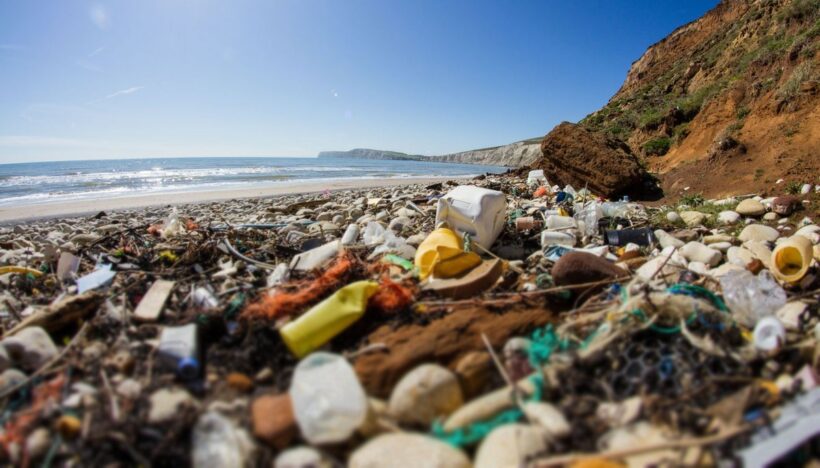Keep It Green: Slow suffocation by plastic

by Patrick Campbell
Anyone interested in ecological issues knows that the principal culprits for the catastrophic decline in marine life are the triple evils of overfishing, inadequate regulation at all levels, and pollution. For decades, weighted trawl nets have scoured the shallow bottom of the Andaman Sea, removing not only entire fish colonies, but all its benthic life, including colonies of sea grass.
There has been no effective control over net mesh sizes; hence the sad mountains of tiny fish in markets – evidence that the next piscine generation has already gone the way of all flesh.
As for marine pollution, it is daily becoming more of an issue in Phuket, with inadequate waste disposal systems chucking thousands of tonnes of raw sewage into the sea. Not to mention eutrophication, whereby 95 per cent of Phuket’s agricultural pesticides and herbicides, mostly toxic, end as chemical run-off in the vast sink we call the ocean.
And plastic? Actually, it is one of the biggest problems of all. Consider these statistics. By 2050, says a reputable UK organization, the world’s oceans will be “expected to contain more plastics than fish (by weight)”. Garbage soup. Farang faeces.
A report by ‘Stemming the Tide’ identified five countries – all Asian and including Thailand – of contributing between “55 and 60 per cent” of all the plastic found in our oceans. And 90 per cent of all plastic that is produced annually is thrown away. Where does it end up? Some in landfills, more in our seas.
You may argue that plastic is harmless. Far from it. It degrades in tidal water, mostly ending up as small particles that appeal as potential food to marine life. A University of California study recently showed that fish in the North Pacific ingest plastic at a rate of 12,000 to 24,000 tonnes a year. Another oceanographer Erik Van Sebille of London’s Imperial College concurs.
“There is so much plastic in marine animals at the moment. Almost every fish and bird that is cut open for science, we find plastic inside it,” says Van Sebille.
“There is fast-growing evidence of direct harm to animals that eat plastics, including young fish starving to death (choked gut perhaps?), oysters stopping reproduction, and birds being weighed down.”
Of course, the chemicals in the plastic add to the harm – potent pills, full of toxic chemicals. A staggering 693 species have been harmed by the stuff.
To be more specific, olive ridley turtles, which feed largely on jellyfish, mistake plastic bags for prey and choke to death, or like other turtle species, are maimed or killed by entangling nylon nets. Small fish eat the plastic microbeads that are contained – thousands of them – in face washes and exfoliants. Albatross chicks die from ingesting colorful plastic lighters.
And of course, all this plastic travels up the food chain. It is sobering to think that we are also victims. In some ways, it feels like we deserve to be.

If you have gardening or environmental concerns, email Patrick HERE or his website HERE.
Latest Thailand News
Follow The Thaiger on Google News:


























